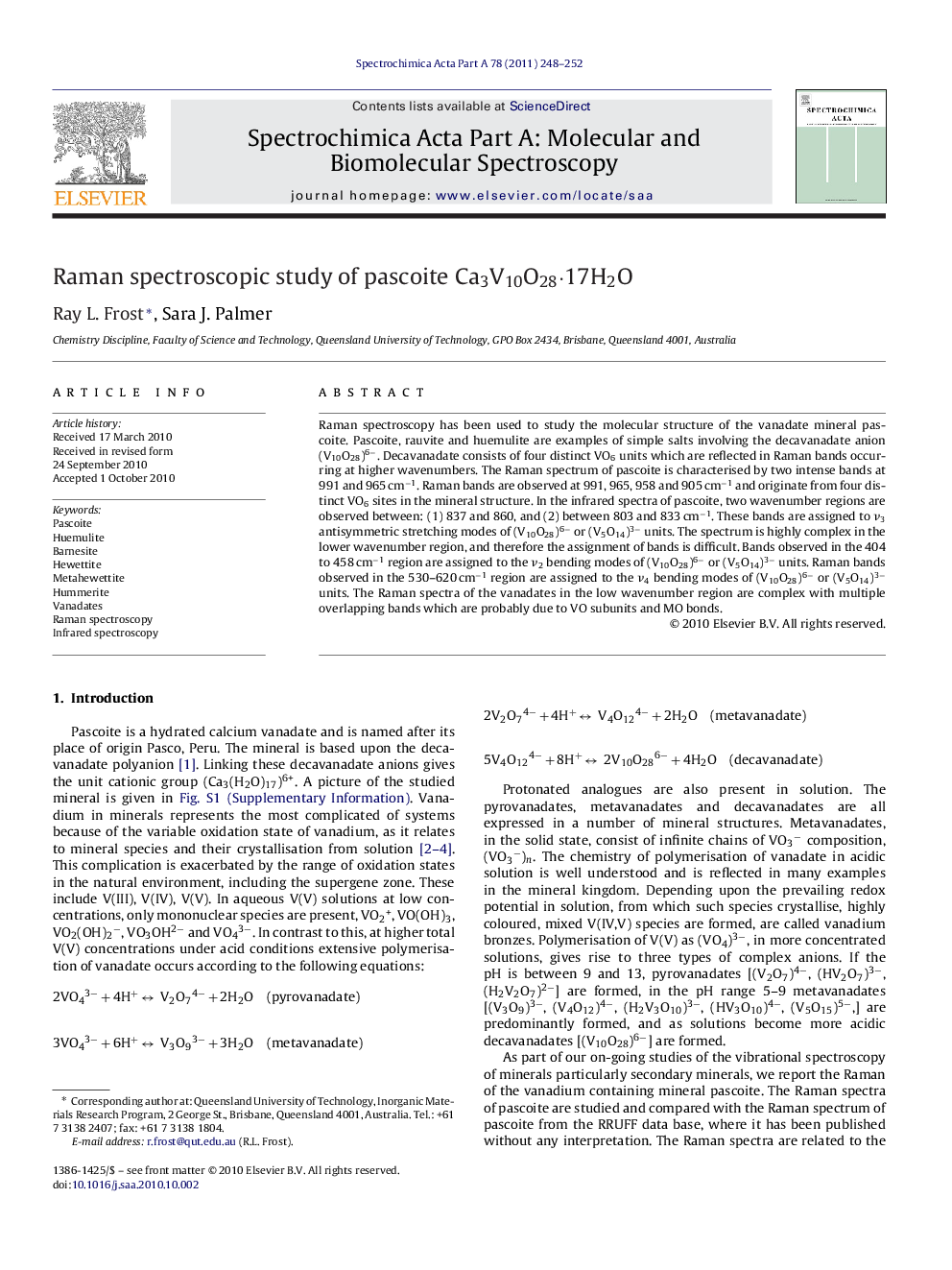| Article ID | Journal | Published Year | Pages | File Type |
|---|---|---|---|---|
| 1233739 | Spectrochimica Acta Part A: Molecular and Biomolecular Spectroscopy | 2011 | 5 Pages |
Raman spectroscopy has been used to study the molecular structure of the vanadate mineral pascoite. Pascoite, rauvite and huemulite are examples of simple salts involving the decavanadate anion (V10O28)6−. Decavanadate consists of four distinct VO6 units which are reflected in Raman bands occurring at higher wavenumbers. The Raman spectrum of pascoite is characterised by two intense bands at 991 and 965 cm−1. Raman bands are observed at 991, 965, 958 and 905 cm−1 and originate from four distinct VO6 sites in the mineral structure. In the infrared spectra of pascoite, two wavenumber regions are observed between: (1) 837 and 860, and (2) between 803 and 833 cm−1. These bands are assigned to ν3 antisymmetric stretching modes of (V10O28)6− or (V5O14)3− units. The spectrum is highly complex in the lower wavenumber region, and therefore the assignment of bands is difficult. Bands observed in the 404 to 458 cm−1 region are assigned to the ν2 bending modes of (V10O28)6− or (V5O14)3− units. Raman bands observed in the 530–620 cm−1 region are assigned to the ν4 bending modes of (V10O28)6− or (V5O14)3− units. The Raman spectra of the vanadates in the low wavenumber region are complex with multiple overlapping bands which are probably due to VO subunits and MO bonds.
